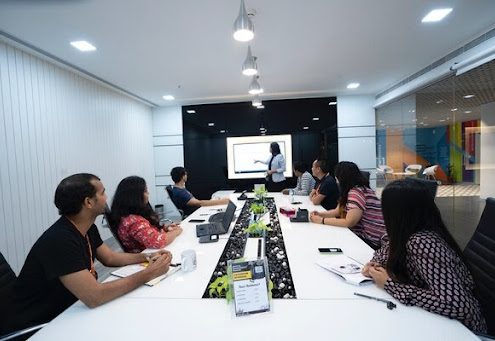PMBoK7 Perspectives: Creating a Collaborative Team Environment

Photo by Randy Fath on Unsplash
In this edition of Project Pointers, we’ll look at building a collaborative team environment, one of the new project delivery elements in the Project Management Institute’s Project Management Body of Knowledge (PMBoK7.) Here are a few ways to create a collaborative team environment for your projects.
- Define roles, not just responsibilities. Productive teams have clear roles and approaches, which can be defined by the project manager, team leader or the team themselves. Team members need to understand their roles, so they know where each person’s responsibility begins and ends, and how information or process steps will be passed from one person to the next. For example, “perform testing” describes a responsibility. That isn’t enough for someone to understand the role. Are they supposed to test a product at various points as it is built, or only the end product? Do they perform testing themselves or include a customer or end user? How and where will the test results be recorded and shared?
- Organize sub-teams. Often, the best way to tackle a set of tasks is with a small group of people. Define sub-teams and identify who will coordinate the team’s efforts to share status with the project manager. This isn’t necessarily a team leader, but rather the person who will ensure proper coordination and communication as the sub-team performs its tasks. To reinforce collaboration, recognize the entire sub-team when items are completed, not just the team leader or coordinator.
- Establish support and review standards. Teams that produce outstanding work use the collective experience and expertise of its members. Leverage that with a peer review process to assure deliverable quality. The peer review process is not to find fault, but to identify ways to produce superior work. To reinforce this approach, recognize both the individual who identified an improvement and the person who adopted the improvement into their deliverable. This supports a team environment where collaboration is recognized.
- Focus on communication approaches. The larger your team, the more communication processes need to be defined and followed. This used to be straightforward, when periodic meetings would be scheduled in a conference room. This isn’t as easy today when team members work from offices, homes, and other locations. Different tasks and reporting requirements necessitate different communication mediums. For example, reporting task completions can be done via a virtual meeting tool. Reviewing a complicated technical deliverable requires rich communication that’s beyond the average person’s and work location’s capability with virtual meeting tools. The lesson here is twofold. First, pick the communication medium based on what the meeting needs to accomplish. Second, understand each team member’s capability with virtual tools when face to face meetings aren’t feasible. Make sure well-trained team members can put the full capabilities of virtual tools to use.
Do you have any tips on building a collaborative environment? If so, share with us in the comments.
For more about team collaboration, check out Dana Brownlee’s Essentials of Team Collaboration course and Communication within Teams by Daisy Lovelace.
Coming Up
Recording for Project 2021 and Project Online Desktop Client Essential Training is complete. Look for the course to be published in a few months.









